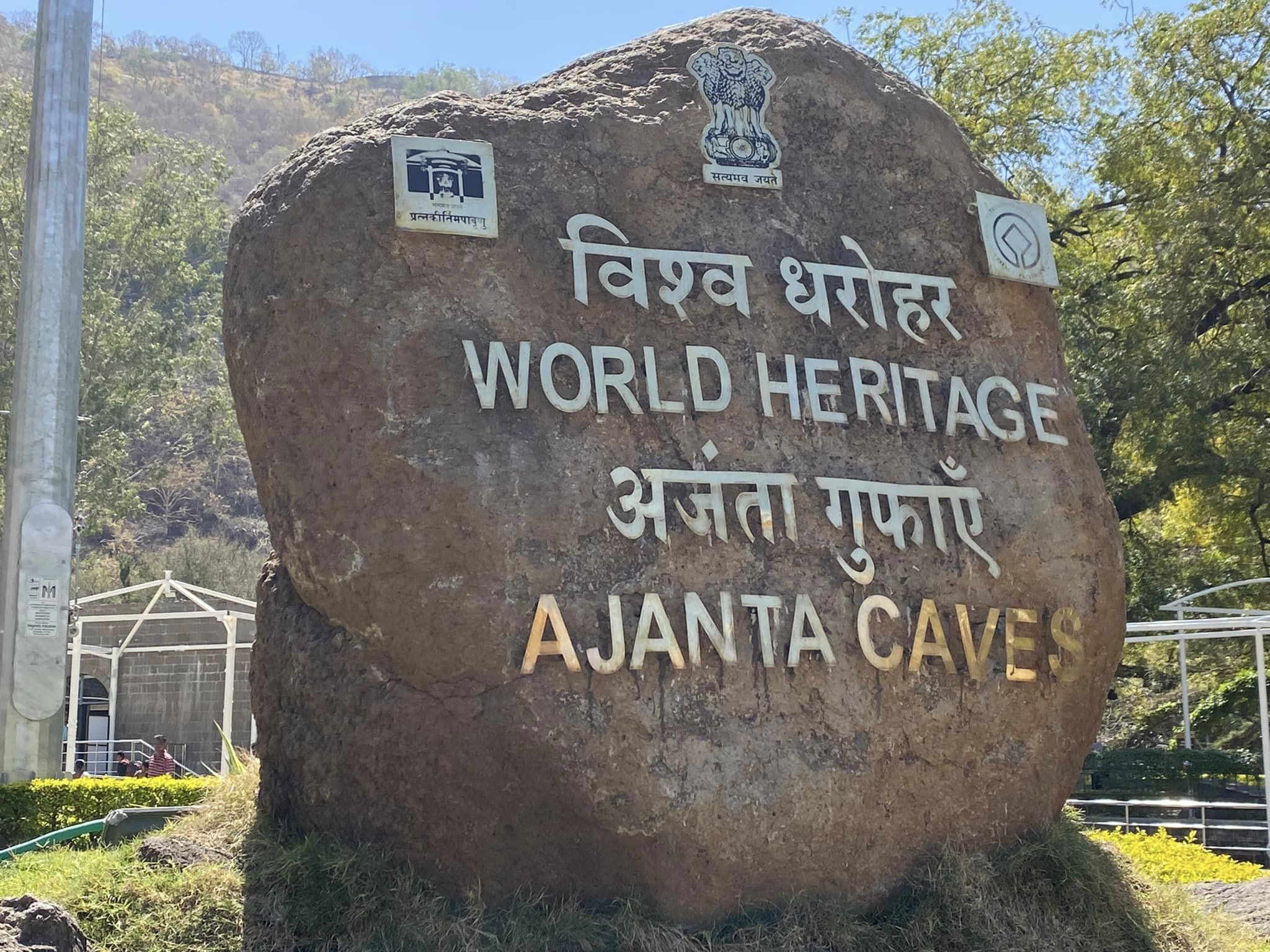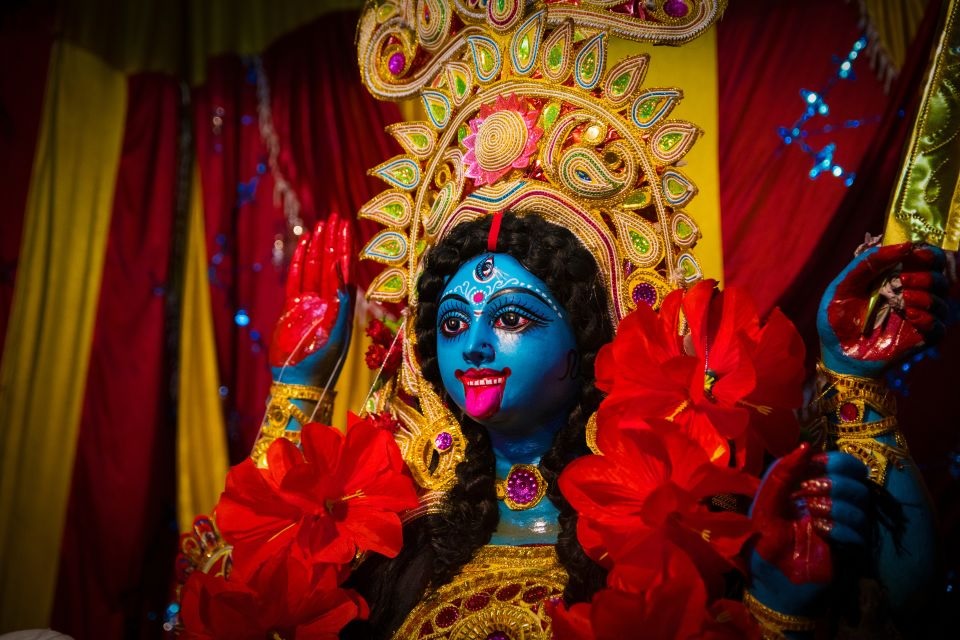The Ajanta Caves in Maharashtra were built in the period from 200 B.C. to 650 AD. With the decline of Buddhism, these caves were abandoned by their inhabitants and fell into obscurity. They were rediscovered by English hunters in 1819. The grottoes are lined with frescoes that are still completely intact today. Because of the beauty and cultural influence of these frescoes, the Ajanta Caves have been declared a World Heritage Site by UNESCO.

Ajanta is the same thing as Ellora while being different because this site is only Buddhist. Moreover, there are not only sculptures, there are also paintings and especially lighting. Indeed, I find that it gives a spiritual and dreamlike dimension to the sculptures.
The History of the Ajanta Caves
The construction of the Ajanta Caves was made possible by the patronage of mainly two dynasties, the Satavahanas and the Vakatakas. The 30 caves you see today were not built together. Some were built in the early Satavahana period and others in the later Vakataka period, which is clearly reflected in the architectural styles of the respective caves.

The caves that formed first were those numbered 9, 10, 12, 12, 13 and 15A. This group of caves is believed to have been in existence between 200 B.C. and 100 BC. was built. These caves show signs of the massive impact of the Hinayana sect of Buddhism, which was widespread during the Satavahana period. The Hinayana sect did not worship Buddha in the way worship was conducted in Hinduism. So the caves from this earlier period were stupa-based (stupa – a dome-shaped building built as a Buddhist shrine) and without Buddha’s paintings or sculptures. While Caves 9 and 10 are stupas with worship halls, Caves 12, 13 and 15A are viharas (monasteries).

Most of the caves, 1-8, 11 and 14-29, were built during the Vakataka period under the patronage of Emperor Harishena between 400 and 500 AD. By then, the Mahayana sect of Buddhism, which worshiped Buddha as a god, had come into vogue. This is how the caves from this period shaped the life and stories of Buddha and painted them on the walls to worship them. And the stunning sculptures and paintings were created with the kind of minimal resources that would likely fill even today’s artists with just as much shock and awe! All the caves from the Vakataka period are viharas except caves 19, 26 and 29 which are chaitya grihas (prayer halls).

The Art and Architecture of the Ajanta Caves
Each cave in the Ajanta is an archaeological gem displaying Indian art at its finest. While the caves and the sculptures within them were constructed using only the most minimal of hammers and chisels, the murals were made from all-natural elements such as plant dyes, lime juice, cow dung, rice husk, egg yolk, etc. One look at the extraordinary work is enough to appreciate the dizzying heights reached by Buddhist religious art in ancient India. I, as an Indian, am certainly proud.

To fully understand the scope of the art and architecture of the Ajanta Caves, I recommend hiring a tour guide before entering these caves. Guided tours are available outside each of these caves, explaining in great detail the importance of each design element. Alternatively, you can purchase a guide book from the Archaeological Survey of India (ASI) office at the entrance to the cave complex and it will be just as helpful. While the whole complex is enticing, I would like to highlight a few special caves and everything that goes into them.

Cave No.1
Cave 1 is of course the first cave you will explore and it is a treasure trove of living murals! The sprawling cave has a grand facade, columned antechambers, and intricate carvings and relief sculptures adorning each of its surfaces. Look out for the huge statues of the two bodhisattvas (a person on the path to becoming a Buddhist and enlightenment), Vajrapani and Padmapani, which stand high at the shrine’s entrance. All of the paintings in this cave illustrate the stories behind the rebirths of Buddha as depicted in the Jataka tales (a vernacular body of Buddhist literature from the 4th century BC describing the earlier births of Buddha) and you will be enchanted by their complexity. Note especially the beautiful image of Bodhisattva Padmapani.

Cave 2 & Cave 6
The main highlight in Cave 2 is the ceiling, which is decorated with abstract designs of flora and fauna as well as a vivid depiction of the important role of women in the society of the time. You will find several carvings dedicated to Hariti, the Buddhist goddess of fertility. This cave also contains some phenomenal frescoes depicting the educational system in the 5th century AD. The door paintings are a distinctive feature of the Ajanta Caves and Cave 6 is their finest example. Although the construction of Cave 6 was never completed and the two-story cave deserves your attention, the myriad of paintings depicting various events in the life of Buddha are significant.

Cave 16 & Cave 17
Caves 16 and 17 were commissioned by Varahadeva, the prime minister of Vakataka Emperor Harishena. Cave 16 is a wealth of paintings that will amaze you. Along with depictions of events from the Jataka tales, there are captivating frescoes that narrate various mythological events. Cave 17 is notable for having what is probably the most avant-garde style of vihara architecture in the Ajanta Caves. This cave is also important in the historical context because of the 30 important murals that tell of the events of the society of the first millennium.

How and when to visit Ajanta Caves
The Ajanta Caves are easily accessible from Aurangabad, which is only a four-hour drive away. It is best to hire a car that will drop you off and pick you up again from the cave site. From there, buses travel along winding roads along the Indhyadri Mountains to the caves. The view of the Waghur River surrounded by jungle during the bus ride is a plus. The Ajanta Caves are open from 9am to 5:30pm every day of the week except Monday.

Do not visit the Ajanta Caves during the summer months from April to June as they get extremely hot. While many people think that October to March is the ideal time to visit the caves due to the pleasantly temperate weather, I suggest you visit during the monsoon season. The Ajanta Caves unfold their true beauty during this time. From July to September it rains heavily in the region and the mountains come alive in all their green. Only during the monsoon season you will experience several beautiful waterfalls on the way around the cave complex.

Spend a magical day at Ajanta Caves.
If you are interested in history and heritage, what better place than Ajanta Caves for you. In the Bhagavad Gita, the Hindu sacred text, Krishna said, “Whatever your mind can think is possible and can be done by man”. The Ajanta Caves prove this by their existence. The Ajanta Caves in Maharashtra house the best that Indian cave art has to offer. A trip here will be an experience of a lifetime!





